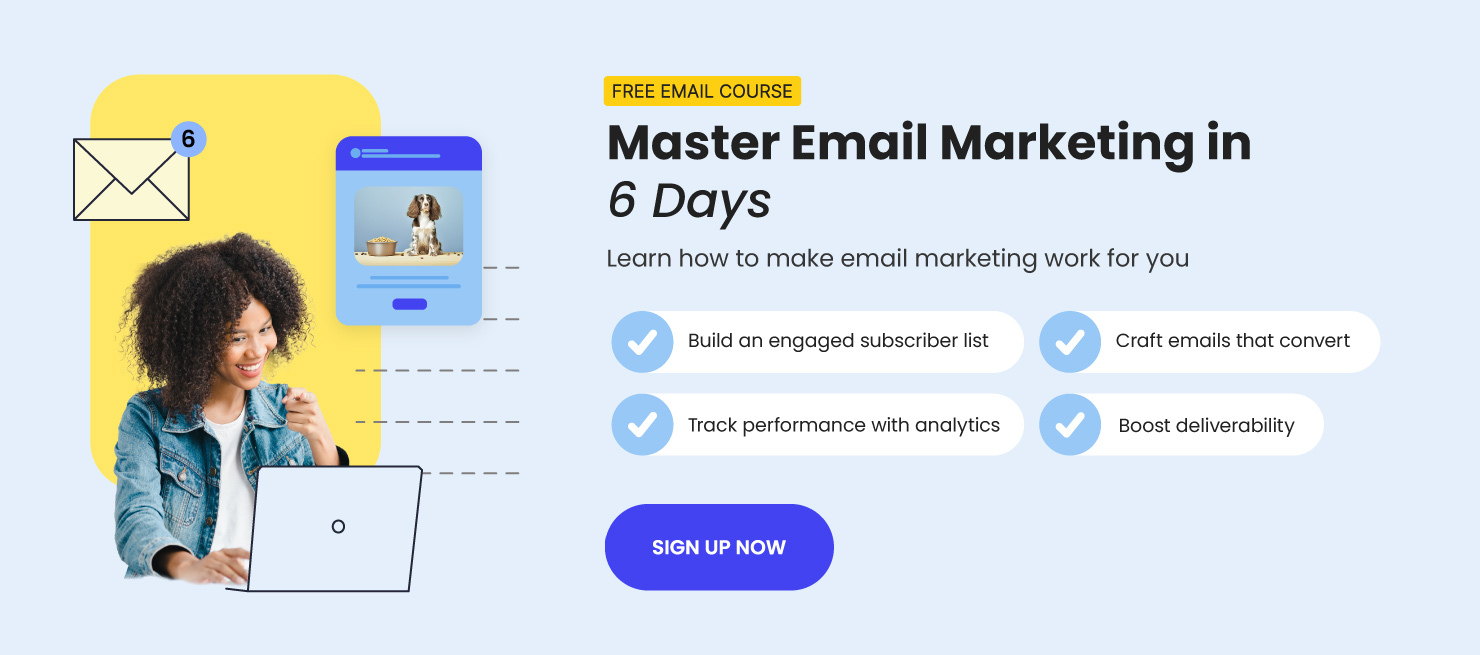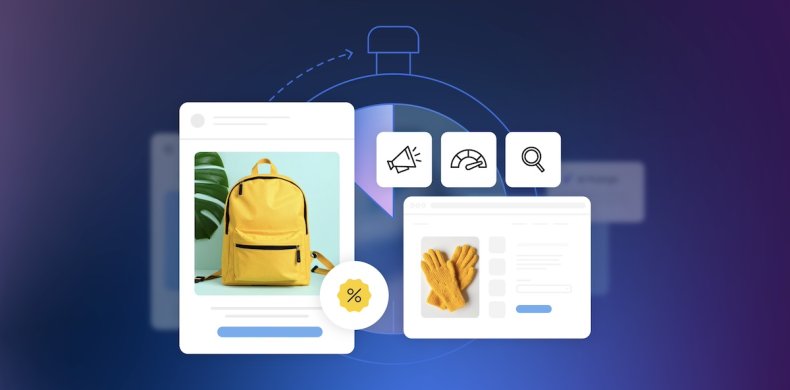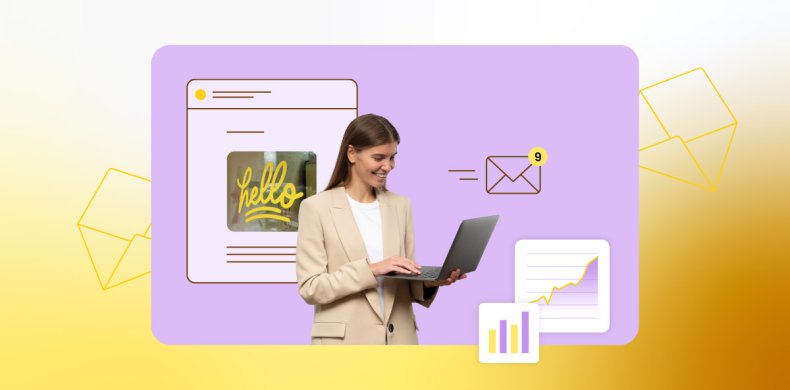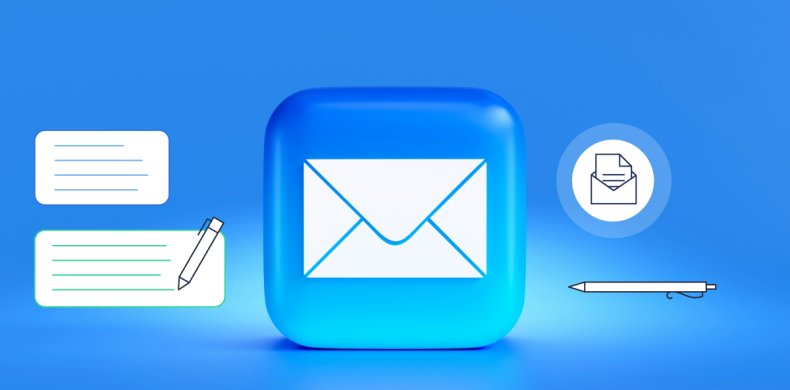
Email inboxes are crowded and unforgiving. You know how it goes: your email is one of tens—maybe hundreds!—of unread messages in people’s inboxes, so if the email copywriting doesn’t instantly speak to the recipient, then off to the trash bin it goes. The right words make readers open and click, and the wrong ones, well, they get ignored, deleted, or marked as spam.
Strong email copywriting isn’t just about writing grammatically correct or perfectly structured sentences, though. It’s about clarity, purpose, and knowing how to guide readers from line one to the call to action. So in this article, we’ll walk through four essential tips to help you write emails that not only get opened, but actually get results.

What is Email Copywriting?
Email copywriting is the art and strategy of writing persuasive messages that are sent via email. At its core, it’s about using words to drive action in the inbox: opening the email, clicking the button, making the purchase, signing up, or engaging with your brand. It is, in many ways, the most important part of effective email marketing.
But email copywriting is rather nuanced, and has a whole lot to do with more than just the words themselves. So let’s crack it open and take a closer look at what makes email copywriting work—and how you can do it better.
4 Top Email Copywriting Tips That Drive Results
As we’ve established: to get real results, you need more than clever phrasing—you need to follow proven email copywriting best practices. So let’s walk through the four essential tips to help you write emails that stand out, resonate, and convert.
Tip #1: Build a Strong Foundation for Your Email Marketing Copywriting
Let’s say you subscribe to a wellness brand’s email list—you’re thinking you’ll get different types of emails with tips on stress relief, early access to product drops, maybe a guided meditation or two. But instead, your inbox fills up with random updates about the founder’s weekend plans, off-topic news articles, and vague subject lines that feel like clickbait. One email is ultra-polished, the next looks like rushed text. There’s no clear voice, no value, and no consistency. And it is, quite simply, not what you signed up for.
Good email copywriting, on the other hand, means showing up with clarity, consistency, and content that actually delivers on your brand’s promise. So how do you make sure that happens?
Deliver What You Said You Would
If your sign-up form promises exclusive discounts, don’t make email recipients hunt for that discount code. If your audience expects updates, make sure those updates are timely and relevant. People should never have to dig through fine print or click around just to find what they were promised.
Failing to meet expectations erodes trust, and that’s a sure way to lose subscribers. Each message should connect to where the subscriber is in their email customer journey with your brand. Are they new and just getting to know you? Are they comparing options? Ready to buy? Shape your copywriting accordingly so it always feels purposeful and aligned.

Match Your Tone to Your Reader
Good email copy isn’t just about writing beautiful prose (though that’s definitely a bonus!). You need to actually speak to your audience in the way they like to be spoken to, in a way they can relate to you and receive your message. That means understanding your audience’s mindset, values, and communication style.
A formal, precise tone might resonate with legal professionals. A friendly, conversational tone might suit a handmade candle business.
So for those legal professionals, the tone of a welcome email might read something like: “Welcome to our monthly briefing—your curated source for legal insights, policy updates, and best practices to support your practice and keep you informed.” Whereas, for that candle business, it might sound more like: “Hey there—so glad you’re here! You’re officially on the list for cozy vibes, behind-the-scenes peeks, and exclusive candle drops.”
Whatever your tone, the key is pick the right one and stay consistent. That way, your brand voice becomes familiar, reliable, and recognizable in every inbox it enters.
Tip #2: Write Content That Captivates
Once you’ve laid the groundwork with a clear, consistent approach, it’s time to focus on the heart of your email—the content itself, of course. This is where your email copywriting really earns its keep.
And no, it’s not just about typing out a few pretty paragraphs and hitting send. Every sentence, every heading, every button has a job to do. Good email copy isn’t just well-written but rather strategically crafted to connect with your reader and guide them toward a specific outcome.
Let’s start at the top, with the one line that determines whether your email even gets read at all:
Nail the Subject Line
It can’t be emphasized enough how important it is to have a good email subject line. If it doesn’t create interest or hint at value, your email will likely get deleted straightaway, or even get marked as spam (which, by the way, will also negatively impact your email deliverability).
With that in mind, prioritize being clear over clever. Sure, use language that taps into curiosity, urgency, or usefulness—but make certain it gets the true point across. Whether it’s “Your 15% off code inside” or “Don’t forget this before summer ends,” your goal is to make someone feel compelled to open your email right now.
A good rule of thumb: keep your email subject line under 50 characters so it doesn’t get cut off on mobile. And avoid all caps or clickbait—we’ve all grown pretty tired of these kinds of subject lines, and one misleading or annoying subject line can undo a lot of that hard-earned brand building.

Don’t Overlook Your Preview Text
Sitting right beside your subject line in the inbox is your preview text. While it’s often an afterthought, it can play a big role in whether someone opens your email or scrolls right on past. It adds context, teases value, and works with your subject line to build on your message.
Let’s say your subject line is: “Skip the long tutorials—learn email copywriting fast.” Your preview text could follow up with something like: “4 actionable tips for writing emails your audience actually wants.”
Now, there’s some discussion around whether the preview text will show up as often in inboxes given recent AI email summary trends, but that doesn’t mean you should take any chances. Assuming it does show up—which it very likely will!—it can help give readers a stronger reason to click. Use that space to your advantage.
Strengthen the Body of Your Email Marketing Copy
Once someone opens your email, the real messaging work begins. This is where your message lives, and where good email copywriting can make the biggest difference. The details matter here. A few smart choices in how you write and structure your content can significantly change your results.
So let’s start with the beginning:
Start Strong With Your First Few Lines
Your email is opened and those first couple sentences need to grab attention and make it clear there’s value in continuing to read.
With that in mind, a strong opener might acknowledge a challenge your reader is facing, ask a question that sparks curiosity, or lead with a specific benefit or desirable outcome. It should draw the reader in and make them feel instantly part of whatever it is you have to say.
So in practice, let’s compare “We’re launching something new this week!” versus “Tired of losing track of tasks? This tool keeps you on schedule—without the stress.” Notice how the second version hooks the reader with relevance and value right away. Just upon reading it, it’s hard not to think, “yeah, I do have a hard time keeping track of tasks. Tell me more!”
Keep It Active
Active voice brings energy and clarity to your writing—it is, after all, active. In an active sentence, the subject performs the action, rather than having the action done to them. For example: “Thousands rely on our services every day” is more confident and direct than “Our services are used by thousands.”
To keep your writing active, look for forms of “to be” (like is, are, was) and see if you can rewrite the sentence so the subject is doing something, not receiving the action. That’s the kind of tone that moves people to action.
Make It Personal
Effective email marketing copy speaks to the reader, not at them. Use words like “you” and “your” to draw them in and make the message feel like it’s meant just for them.
So instead of: “We’ve added a new feature to improve customer efficiency,” try: “You can now save time with our newest feature—here’s how it works.”
It feels more human, more helpful, and much more likely to keep your reader engaged. They instinctively envision themselves in that role, and want to learn more.
What if you’re feeling short on copywriting inspo? No problem. SiteGround Email Marketing has a built-in, email-optimized AI writer that makes it super easy to create this kind of optimal content on the fly.

Make Your Emails Easy to Scan
You probably don’t read every word of every email you receive, and, well, your email recipients don’t either. They skim. We all skim. And unless something grabs our attention right away, we move on.
That’s why scannability is so important in good email copywriting. Your content might be literary genius, but if it looks like a wall of dense text, few people will stick around to find out.
Here’s how to make your emails easier (and more inviting) to read:
- Keep paragraphs short. Aim for 2–3 sentences max. It makes everything feel lighter and more approachable.
- Use bullet points and subheadings. They break up your content visually and help readers jump to the parts that matter to them.
- Highlight key phrases with bold or italics. Just don’t overdo it—use these sparingly to call attention to what truly matters.
- Vary your sentence length. A mix of short and longer sentences creates rhythm and keeps things flowing naturally.
- And don’t forget: most people are reading on their phones. Make sure your emails are mobile-friendly, with enough spacing and a layout that’s easy to navigate on small screens. This follows email copywriting best practices—because how your message is delivered and viewed matters just as much as what it says.

Enhance Your Email Copy with Design and Visuals
Great email marketing copy works hand-in-hand with your email’s design. The way your message looks—the layout, images, colors, and overall style—can significantly shape how your audience experiences and engages with all your well-thought-out words.
Different goals call for different designs and email layouts. If you’re promoting a new product, a clean, visually striking layout with bold images is often the way to go. Conversely, if you’re sending a newsletter or sharing in-depth updates, a text-forward format that invites reading and conversation might be more effective.
Your email marketing design choices will also guide your writing style. A product spotlight usually demands concise, punchy copy, while a content-rich email allows for a warmer, more relaxed tone.
SiteGround offers ready-made email templates that make it easy to choose just the right layout for your goals—no design experience needed. Plus, with easy set up and sending, in addition to built-in tools for segmentation, automation, and tracking, SiteGround Email Marketing helps you connect with the right audience at the right time.

Craft Calls to Action That Drive Results
Your email’s call to action (CTA) is the main reason behind your email so getting it right couldn’t be more important. Whether it’s “Shop Now,” “Join Free,” or “Claim Your Discount,” this little phrase has to be crystal clear, motivating, and simple to click. It’s the culmination of all your other email efforts, so getting it right isn’t trivial.
Choose action-oriented words that inspire urgency and excitement—“Get Started” feels way more inviting than “Submit Form.” And don’t hide your CTAs deep in your email where they might get missed. Place them strategically so they’re easy to spot and click, even on a quick skim. A colored (within brand!) button is ideal.

Tip #3: Think Bigger with Strategy
Creating a good email is one thing, but effective email marketing strategy is much much more than just that one email. It’s about designing a thoughtful email sequence that connects, engages, and converts over time. So if you’re just starting out, thinking strategically will keep you on track and help prevent burnout.
Plan Ahead with a Content Calendar
Having a schedule for your emails keeps things organized and helps you to keep your messaging extra fresh. Because when you plan ahead, you avoid repeating yourself, and you make sure you’re hitting the right mix of promotional content and helpful information. Plus, mapping out your topics lets every email have a clear purpose and fit into a bigger picture.
And here’s where things really get efficient: planning ahead also makes it easier to set up email automation—welcome series, lead-nurturing sequences, and more. When your content is mapped out in advance, automation becomes not just possible, but powerful, and it helps you stay consistent without having to manually write every send.
Use Personalization
Personalization goes way beyond inserting someone’s first name in the subject line. You can—and should—customize your messages based on the specific interests and needs of your audience. Maybe you know what brought them to your list—a download, a webinar, or specific type of business role. Use those clues! Segment your list and customize your emails so recipients feel like you’re speaking directly to them. This level of personalization adds depth and relevance, making your copywriting more powerful.


Tip #4: Track, Test, and Optimize
Even the most carefully crafted email won’t always land the way you expect. Maybe you spent extra time perfecting your subject line and polishing your CTA. But when the results come in… something’s off. Open rates are lower than expected, clicks are minimal, or unsubscribes suddenly spike.
The reality is that email copywriting doesn’t stop when you hit send. To get consistently better results, you need to track your email marketing metrics, test variations, and optimize based on what you learn.
Use Metrics to Guide Your Next Move
Every key stat—open rates, click-through rates, conversions, unsubscribes—is a window into how your audience is experiencing your emails. Low open rates? Your subject line might need work. Lots of opens but few clicks? Maybe your CTA isn’t compelling, or your email content doesn’t align with what the subject line promised.
The more you analyze, the more you’ll understand what resonates with your audience, and what doesn’t—and you can tweak from there.
Run A/B Tests to Improve Performance
The good news is that you don’t need to guess what works. Instead, test it! Try two different subject lines. Test a short version of your email against a longer one. Switch up your CTA placement or wording. The key is to test one element at a time, sending one version of your email to one part of your audience, and the other version to another—and then observe your stats. You’ll find that small changes can make a big difference, and A/B testing lets you find out what truly performs best.
Treat Every Send as a Learning Opportunity
Along the lines of A/B testing, the goal here really isn’t to be perfect right away—it’s to get smarter with every email. Keep track of what works, what doesn’t, and what you want to try next. Over time, these small adjustments add up to big improvements in engagement, clicks, and conversions.

Put Your Email Marketing Copywriting to Work
Email copywriting doesn’t just boil down to sounding clever or using perfect grammar—it’s about being intentional, strategic, and clear. When your emails align with what your audience expects and delivers content they care about in a tone that feels familiar, your message lands. Layer in clean design, thoughtful structure, and a strong CTA, and you’ve got a recipe for results.
SiteGround Email Marketing makes it easy to bring this full package together. With ready-to-use templates, smart automation, and built-in AI writing tools, it takes the guesswork out of content creation and helps you send polished, on-brand emails that perform. Explore it for yourself and start sending with confidence.




Comments ( 0 )
Thanks! Your comment will be held for moderation and will be shortly published, if it is related to this blog article. Comments for support inquiries or issues will not be published, if you have such please report it through our official channels of communication.
Leave a comment
Thanks! Your comment will be held for moderation and will be shortly published, if it is related to this blog article. Comments for support inquiries or issues will not be published, if you have such please report it through our official channels of communication.